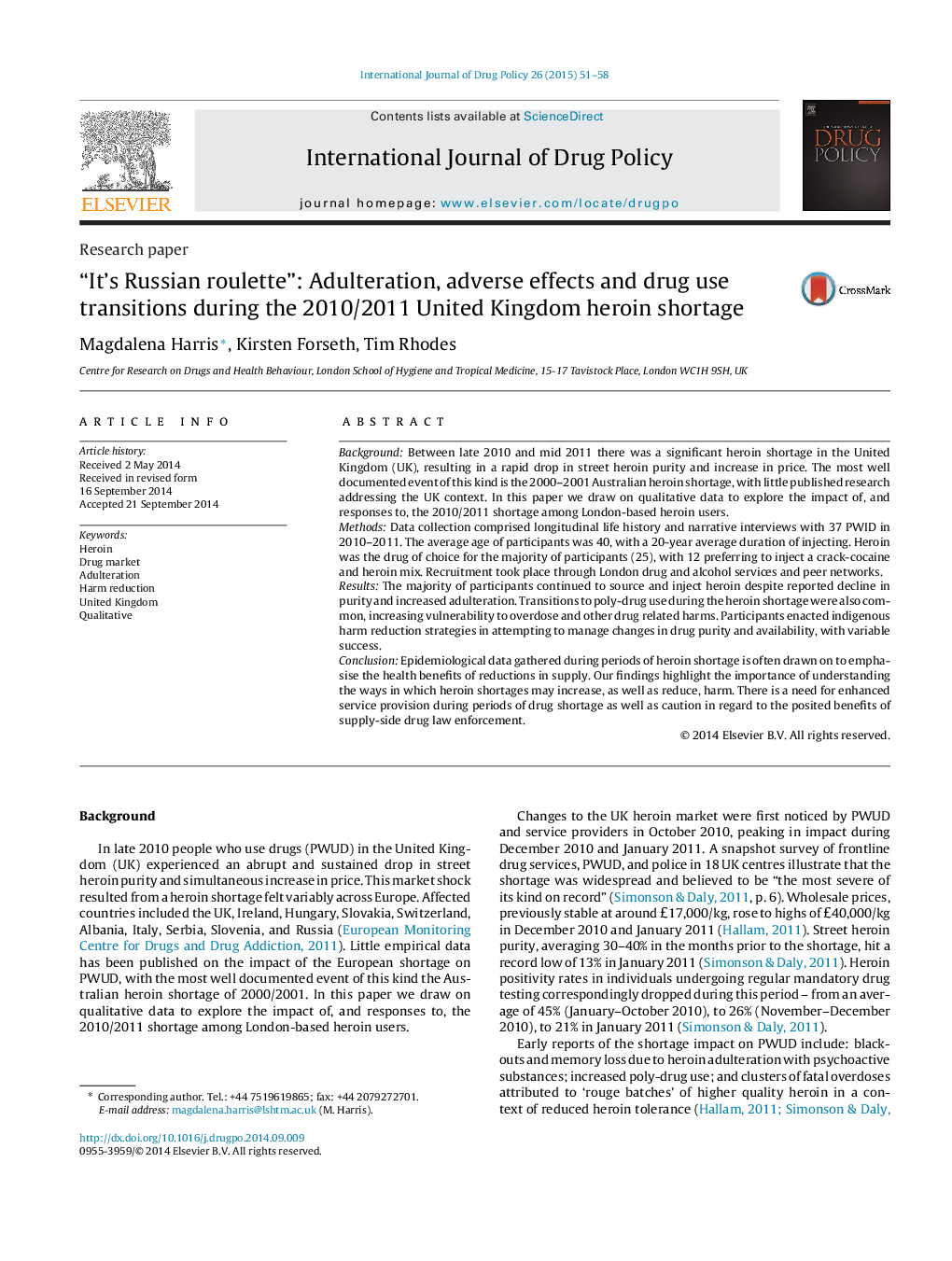| Article ID | Journal | Published Year | Pages | File Type |
|---|---|---|---|---|
| 1075284 | International Journal of Drug Policy | 2015 | 8 Pages |
•We explore the impact of, and responses to, the 2010/2011 UK heroin shortage.•Heroin use continued despite decreased purity and increased adulteration.•Transitions to poly-drug use increased vulnerability to overdose and other harms.•Indigenous harm reduction strategies variably modified shortage impacts.•Qualitative research provides insight on harms rarely captured by surveillance data.
BackgroundBetween late 2010 and mid 2011 there was a significant heroin shortage in the United Kingdom (UK), resulting in a rapid drop in street heroin purity and increase in price. The most well documented event of this kind is the 2000–2001 Australian heroin shortage, with little published research addressing the UK context. In this paper we draw on qualitative data to explore the impact of, and responses to, the 2010/2011 shortage among London-based heroin users.MethodsData collection comprised longitudinal life history and narrative interviews with 37 PWID in 2010–2011. The average age of participants was 40, with a 20-year average duration of injecting. Heroin was the drug of choice for the majority of participants (25), with 12 preferring to inject a crack-cocaine and heroin mix. Recruitment took place through London drug and alcohol services and peer networks.ResultsThe majority of participants continued to source and inject heroin despite reported decline in purity and increased adulteration. Transitions to poly-drug use during the heroin shortage were also common, increasing vulnerability to overdose and other drug related harms. Participants enacted indigenous harm reduction strategies in attempting to manage changes in drug purity and availability, with variable success.ConclusionEpidemiological data gathered during periods of heroin shortage is often drawn on to emphasise the health benefits of reductions in supply. Our findings highlight the importance of understanding the ways in which heroin shortages may increase, as well as reduce, harm. There is a need for enhanced service provision during periods of drug shortage as well as caution in regard to the posited benefits of supply-side drug law enforcement.
